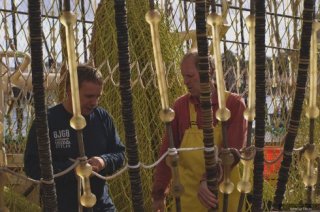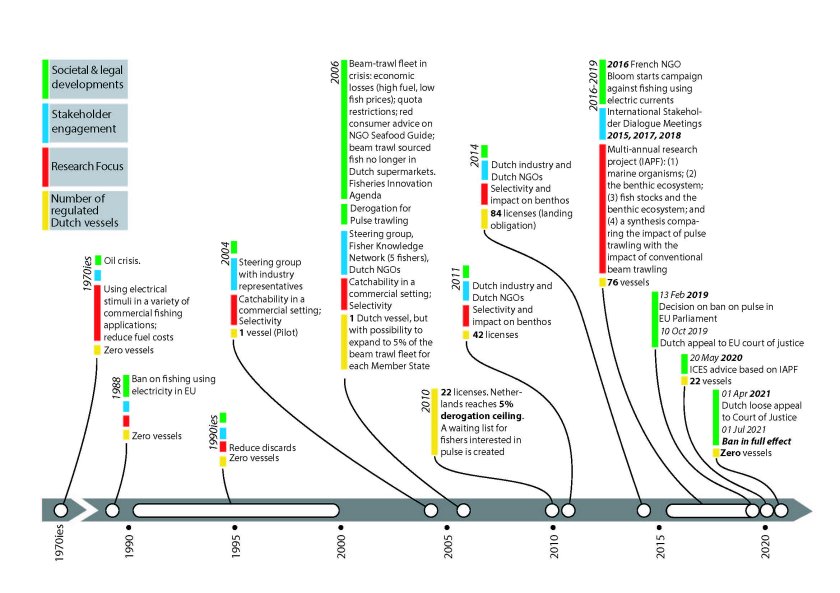
Dossier
Pulse fishing
Scientists and fishermen were looking for more sustainable ways to catch flatfish and shrimp, experimenting with pulse fishing. In that method, tickler chains have been replaced by electrodes that give off electric pulses: the pulse trawl. Wageningen University & Research studied the advantages and disadvantages of pulse fishing for marine ecosystems and the economy. The European Parliament voted to ban pulse fishing in 2019, despite scientific research showing it to be a sustainable alternative to sole fishing. The overall pulse ban will be in force from 1 July 2021.
What was pulse fishing?
The Dutch fishing industry relies heavily on sole caught using beam trawls. Beam trawls are equipped with wake chains dragged across the seabed in front of the net to mechanically chase flatfish from the seabed into the net. These chains cause high fuel consumption, unwanted bycatch and disruption to benthic ecosystems. Given these effects, bottom trawling is a heavily debated and controversial type of fishery. An alternative to this was pulse fishing. This technique replaces the heavy chains of the traditional beam trawl with electrodes that emit electric pulses that immobilise (cramp) target species and make them available for capture.

Why was pulse fishing research important?
Pulse fishing is a technique that has been studied since the early 1970s by Wageningen Marine Research and its predecessors on an occasional and very small scale, focusing on selectivity. High oil prices caused renewed interest from industry and ministries after 2000, and in 2006 the EU asked the International Council for the Exploration of the Sea (ICES) for the first time to advise on this method.
More requests would follow. This situation initiated a research programme led by Wageningen Marine Research. The research programme initially took place on one commercial vessel and later expanded to include many more, as the need to find alternatives to beam trawling increased and the pulse trawl evolved from a new technique plagued by technical problems and defects into a reliable gear suitable for real fishing.

International component
Wageningen Marine Research has contributed much to knowledge development on the effects of pulse fishing, resulting in an ICES opinion with international scientific consensus - largely based on research by Wageningen Marine Research, Wageningen Economic Research, NIOZ and ILVO - that concluded that pulse fishing is both ecologically and economically better than beam trawling.
However, the international component came years too late, and the issue proved much more controversial than the government had anticipated. The European final ban on pulse fishing was mainly based on political and socio-economic considerations, despite available advice and research results from ICES. At that time, the Wageningen Marine Research research programme was still running. Based on this, ICES issued advice in May 2020 that concluded that pulse fishing for sole in the North Sea scores better on relevant sustainability aspects and targets than fishing with traditional beam trawl.
Wageningen Marine Research has contributed much to knowledge development on the effects of pulse fishing, resulting in an ICES opinion with international scientific consensus - largely based on research by Wageningen Marine Research, Wageningen Economic Research, NIOZ and ILVO - that concluded that pulse fishing is both ecologically and economically better than beam trawling. Dutch NGOs that were moderately positive towards it recognised the benefits of the new technique. However, the EU political arena turned out to be quite different and did not allow this technique, despite a (late) international discussion on the subject organised by LNV.
Watch the animations on the effects of pulse fishing
- Unfortunately, your cookie settings do not allow videos to be displayed. - check your settings
